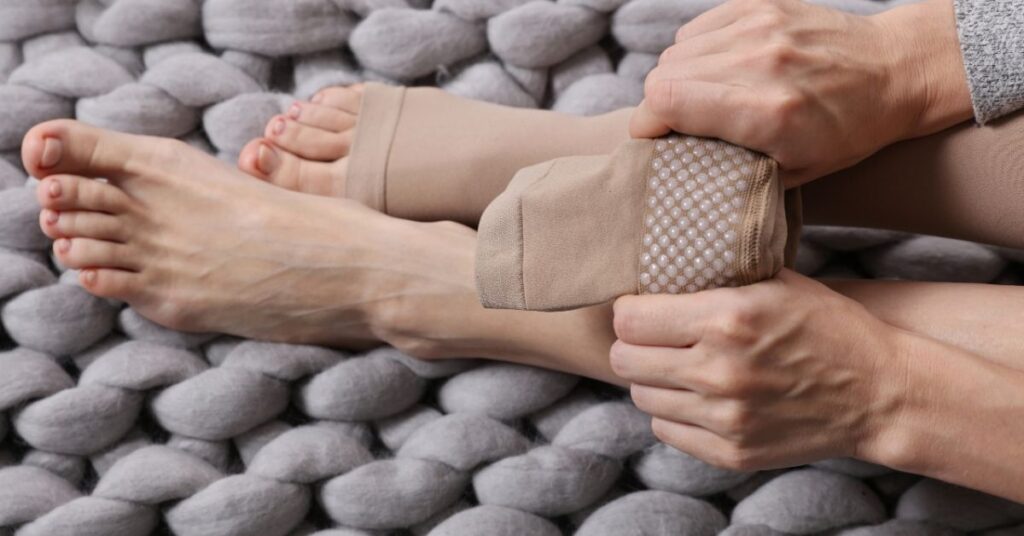Lymphedema is a condition characterized by swelling, particularly in the arms and legs, due to the accumulation of lymph fluid. This often occurs when the lymphatic system is compromised, leading to impaired flow of lymph. Understanding how to prevent lymphedema is crucial, especially for individuals at risk, such as those undergoing cancer treatment. This article will explore the risk factors, preventive measures, symptoms, and treatment options available for lymphedema.
What is the Risk of Lymphedema and Who is at Risk?
What are the risk factors for developing lymphedema?
The risk of developing lymphedema is influenced by various factors. Primary lymphedema can occur due to congenital conditions affecting lymph vessels, while secondary lymphedema is often associated with damage to the lymphatic system, which may occur as a result of surgery, radiation therapy, or infection. Individuals who have undergone cancer surgery, especially those who have had lymph nodes removed during procedures such as breast cancer treatment, are at a heightened risk for lymphedema. Other risk factors include obesity, previous infections in the affected area, and trauma. Understanding these risk factors enables individuals to take proactive measures to reduce their risk for lymphedema.
How does cancer treatment increase the risk of lymphedema?
Cancer treatment can significantly increase the risk of lymphedema, particularly in patients who have had surgery to remove lymph nodes or those who have undergone radiation therapy targeting lymph nodes. The removal of lymph nodes disrupts the flow of lymph fluid, which can lead to swelling as the body struggles to manage the excess lymph. Breast cancer patients, for instance, often face a higher risk of lymphedema post-surgery, making it vital for them to be aware of their risk and take preventive measures. Furthermore, radiation can cause scarring and damage to lymph vessels, further exacerbating the risk of lymphedema.
What are the stages of lymphedema?
Lymphedema progresses through distinct stages, each characterized by varying degrees of swelling and symptoms. In the early stage, lymphedema may present as mild swelling that can be reduced with elevation or compression. As the condition progresses to moderate lymphedema, swelling becomes more noticeable and persistent. In advanced stages, severe lymphedema may develop, leading to significant swelling, hardening of the skin, and increased risk of infection. Early detection and intervention are crucial in managing lymphedema effectively and preventing its progression.
How Can You Prevent Lymphedema?
What steps can you take to prevent lymphedema after cancer surgery?
Preventing lymphedema after cancer surgery involves a proactive approach to care. Following surgical procedures that involve lymph node removal, patients should engage in gentle exercises to promote lymph flow and prevent stagnation. Consulting a certified lymphedema therapist can provide valuable guidance on personalized exercise regimens and proper techniques to help reduce swelling. Additionally, it is important to avoid heavy lifting or strenuous activities that may strain the affected arm or leg. Wearing compression garments as recommended can also help manage potential swelling and promote healthy lymphatic function.
How can proper skin care help prevent infection and lymphedema?
Proper skin care is essential in preventing infection, which can exacerbate lymphedema symptoms. Maintaining clean and moisturized skin in the affected areas can help prevent cuts, scrapes, and infections that might lead to a worsening of lymphedema. Individuals should be vigilant in protecting their skin from irritation and injury, particularly in areas where lymph nodes have been removed. Regularly checking for signs of infection, such as redness, warmth, or increased swelling, is crucial to ensure timely intervention and prevent complications.
Why is it important to maintain a healthy weight to reduce your risk?
Maintaining a healthy weight is vital for reducing the risk of lymphedema. Excess body weight can place additional strain on the lymphatic system, making it more challenging for lymph fluid to circulate properly. Obesity is a significant risk factor for developing lymphedema, as it can lead to increased pressure on lymph vessels and impede lymph flow. By adopting a balanced diet and engaging in regular physical activity, individuals can help manage their weight and, in turn, lower their risk of lymphedema.
What are the Symptoms of Lymphedema?
What are the early signs of lymphedema in the arms and legs?
Recognizing the early signs of lymphedema is crucial for effective management. Initial symptoms may include a feeling of heaviness or tightness in the affected arm or leg, along with mild swelling that may fluctuate throughout the day. Patients might notice that their clothing or jewelry fits more snugly than usual. Early intervention is key; therefore, being aware of these subtle changes allows individuals to seek appropriate care before the condition progresses.
How to recognize the signs of lymphedema progression?
As lymphedema progresses, symptoms may become more pronounced. The swelling may become persistent and more pronounced, leading to noticeable changes in skin texture and firmness. Patients may also experience discomfort, pain, or a tingling sensation in the affected area. In severe cases, lymphedema can lead to skin changes such as thickening or hardening, and individuals may notice a decrease in mobility. Being vigilant about these signs is essential for timely intervention and effective treatment.
What should you do if you notice symptoms of lymphedema?
If symptoms of lymphedema are noticed, it is essential to seek professional help promptly. Consulting a certified lymphedema therapist can help develop a tailored treatment plan aimed at managing symptoms and preventing further progression. Early referral to a cancer center or specialist can provide access to comprehensive care, including physical therapy, education on self-care techniques, and recommendations for compression garments. Taking action early can greatly improve outcomes and quality of life for those at risk of lymphedema.
What Treatment Options are Available for Lymphedema?
What is the role of a certified lymphedema therapist?
A certified lymphedema therapist plays a pivotal role in the management and treatment of lymphedema. These professionals are trained to assess the condition, develop individualized treatment plans, and educate patients on self-management strategies. Lymphedema therapists may employ techniques such as manual lymphatic drainage, compression therapy, and exercise regimens to help reduce swelling and improve lymph flow. Their expertise is invaluable in helping patients navigate the complexities of lymphedema treatment.
What types of lymphedema treatment are most effective?
Effective lymphedema treatment typically involves a combination of therapies aimed at reducing swelling and improving lymphatic function. Compression therapy, which includes the use of specialized garments, helps maintain pressure on the affected area, promoting lymph drainage. Manual lymphatic drainage is a hands-on technique that encourages lymph fluid movement and helps alleviate swelling. Additionally, exercise tailored to the individual’s needs can enhance lymphatic flow and overall mobility. A comprehensive treatment plan combining these approaches is often the most effective way to manage lymphedema.
How does manual lymphatic drainage help treat lymphedema?
Manual lymphatic drainage (MLD) is a specialized massage technique designed to stimulate the lymphatic system and facilitate the movement of lymph fluid. This therapy can significantly help reduce swelling associated with lymphedema. By applying gentle pressure and rhythmic movements, MLD encourages the reabsorption of excess fluid and helps improve circulation. Many patients find this treatment beneficial for both symptom relief and overall well-being, making it an essential component of a comprehensive lymphedema treatment plan.
How to Manage and Treat Lymphedema Effectively?
What lifestyle changes can help treat lymphedema?
Implementing lifestyle changes can be instrumental in managing lymphedema effectively. Incorporating regular exercise, such as walking or swimming, can help improve lymphatic circulation and reduce swelling. Additionally, adopting a diet rich in whole foods, low in sodium, and high in antioxidants can support overall health and aid in weight management. Staying hydrated and avoiding excessive heat or sun exposure are also important for individuals managing lymphedema. These lifestyle modifications, combined with professional guidance, can lead to improved outcomes.
How can compression garments assist in managing lymphedema?
Compression garments are a key component in the management of lymphedema. These specially designed garments apply consistent pressure to the affected area, which helps prevent the accumulation of lymph fluid and reduces swelling. They can be worn throughout the day and are available in various styles and levels of compression to suit individual needs. Proper fitting by a professional is essential to ensure maximum effectiveness. By enhancing lymphatic flow, compression garments can significantly improve quality of life for those living with lymphedema.
When should you seek professional help to treat lymphedema?
Seeking professional help for lymphedema should not be delayed if symptoms arise or worsen. Individuals experiencing persistent swelling, changes in skin texture, or increased discomfort should consult a certified lymphedema therapist or healthcare provider. Timely intervention is crucial in preventing complications and managing symptoms effectively. Regular follow-ups and assessments can help tailor treatment plans to individual needs, ensuring optimal management of lymphedema.





